Solar Opposites, created by Justin Roiland and Mike McMahan, released on Hulu to general critical acclaim. The cartoon, about a group of aliens and their pet pupa escaping their destroyed homeworld and crash landing on Earth certainly has its influences from Roiland’s current adult hit Rick and Morty, but is unique enough to show potential.
With the show’s first season in the books and already renewed for another season, it may be a bit early to compare the show to its more successful sibling, but on potential alone, is it possible Solar Opposites can be a better show than Rick and Morty? Here are five reasons it can, and five reasons it can’t.
CAN: A More Balanced Voice Cast
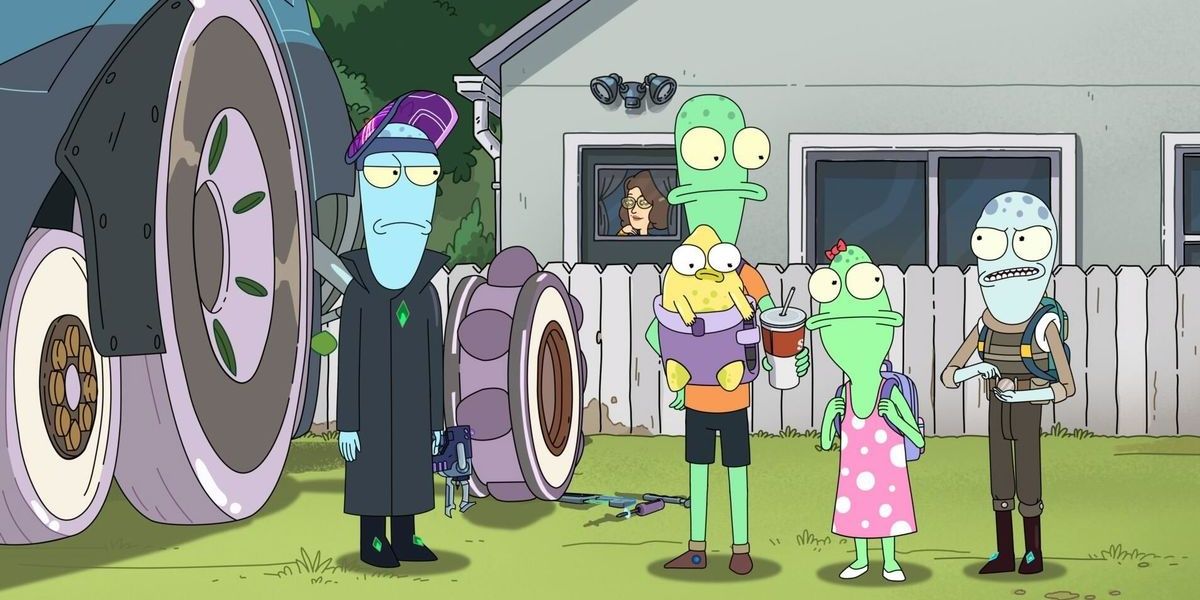
Justin Roiland is great in Rick and Morty, but the chemistry built there is because the main characters are voiced by the same person. Solar Opposites has four distinct leads allowing Roiland to not be in a figurative echo chamber, and allow his costars to really challenge him to adapt to their performances.
CAN’T: The Setting Is Restricted
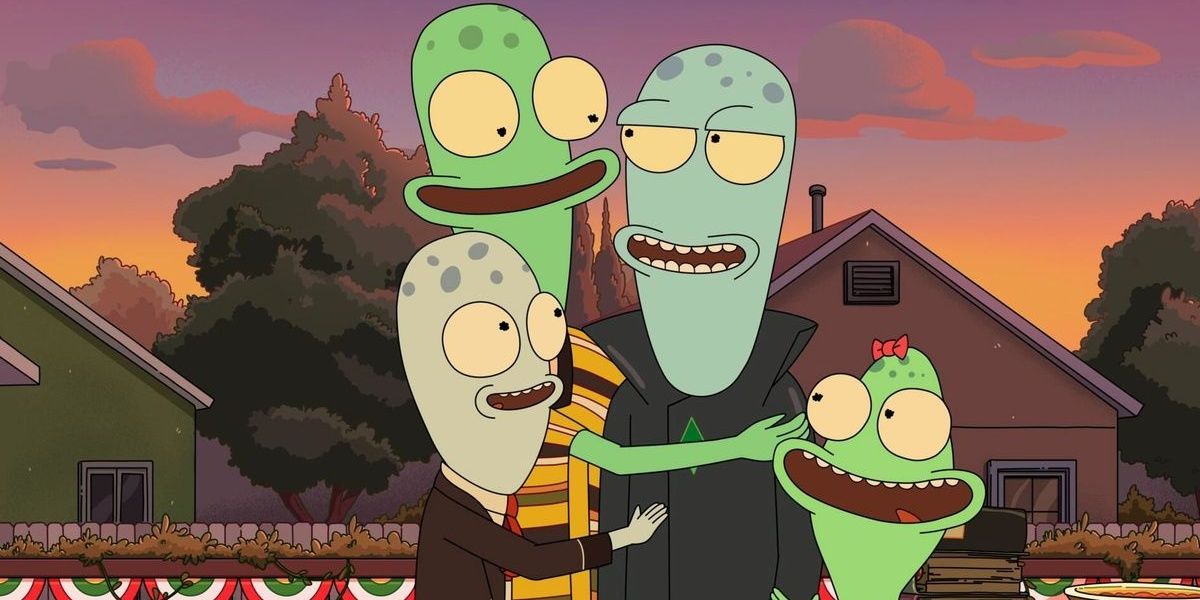
Rick And Morty‘s biggest strength is its ability to conjure up new worlds at Harmon and Roiland’s whim. Solar Opposites is essentially stuck in a finite location, Earth. Now in fairness, a self-contained setting may be what’s best for Solar Opposites, but there is no denying that Rick And Morty holds the world building advantage.
Can: One Character Doesn’t Dominate
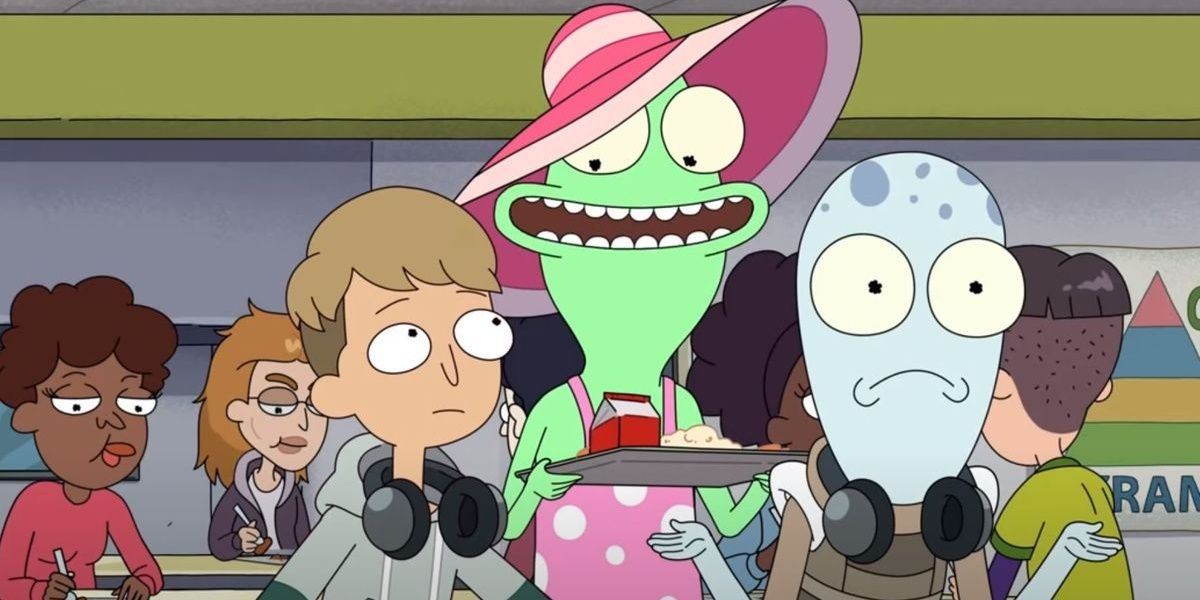
Rick and Morty‘s tone seems to be dependent on one character. Rick is a depressed alcoholic god-like character, who through the discovery of infinite realities and universes, realizes that life is cheap. His cynicism has rubbed off on his family and led to them also having the same callous disregard and underlying pessimism.
Solar Opposites seems to take the opposite approach. While Korvo and Terry are the designated “A” plot, we never see one character overwhelm the other. Terry keeps Korvo in check, and Korvo calls out Terry on his stupidity. Similarly, Yumyulack and Jessie also ensure one doesn’t dominate the other, with Yumyulack’s street smarts playing well with Jessie’s sunny disposition.
Can’t: Strict Character Pairings
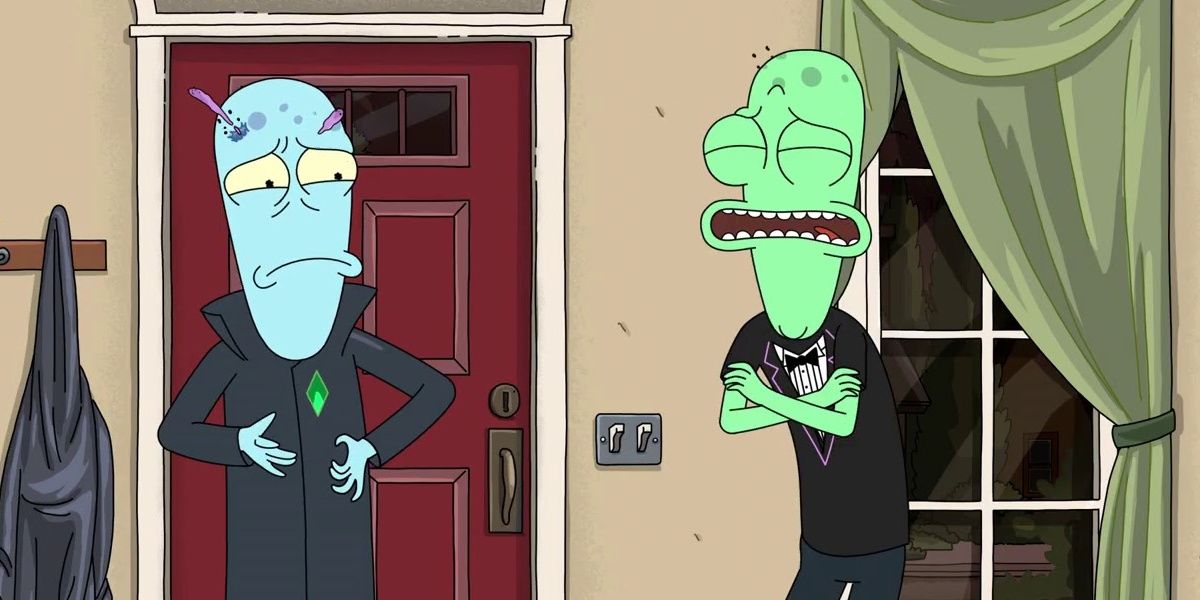
Excluding “Terry and Korvo Steal a Bear”, the first season of Solar Opposites stuck to pairing Terry and Korvo, and Yumyulack and Jessie. Obviously one season is hard to judge the show’s direction, but it seems like those characters have been metaphorically handcuffed together.
Rick and Morty may rely on Rick and Morty, but its character pairings are interchangeable. For as good as Rick and Morty are together, they can be switched with other family members and still carry a serviceable-at-worst plot. While optimistically the Shlorpians are interchangeable, and can play off each other, viewers won’t know for sure until they see that in action.
Can: A Straightforward Focus
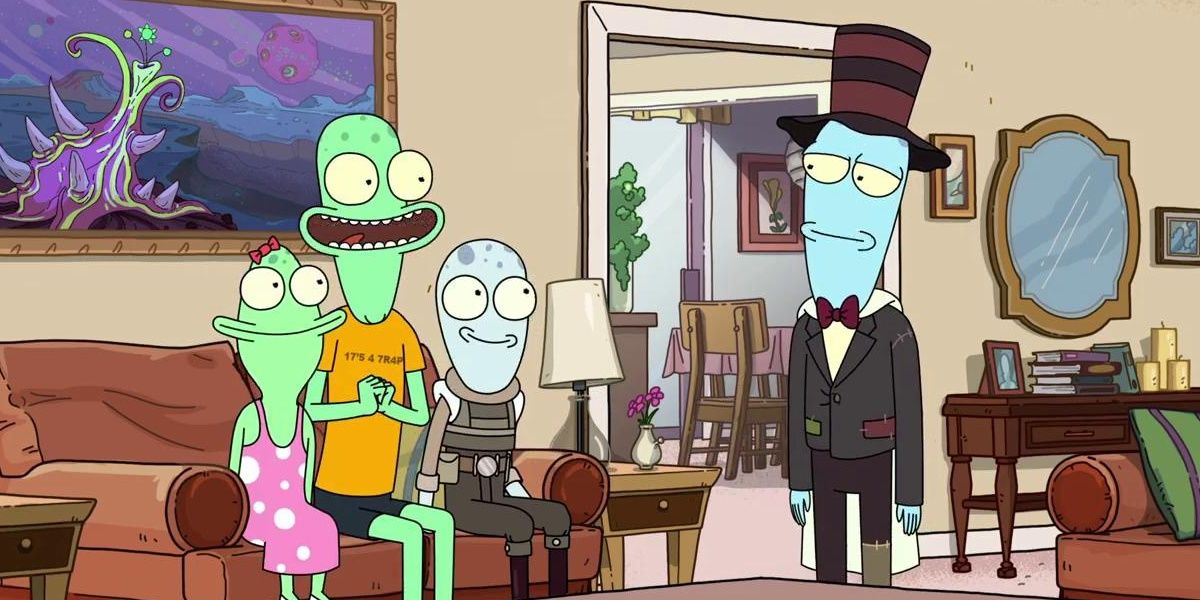
The premise of Solar Opposites works great as an elevator pitch. It’s simple, it can be mapped out in multiple storylines, and it doesn’t need to back itself up with outstanding visuals. Plus, there is a definitive endgame to the series, either Korvo fixes the ship, or the Pupa evolves and destroys and terraforms Earth.
Rick And Morty does have a premise, but there really doesn’t seem to be a definitive endgame. Understandably with a 70-episode order, that endgame doesn’t need to be realized now, but generally a well-planned conclusion is the difference between a memorable series with a great conclusion and a memorable series that just ends.
Can’t: Unrealized Characters
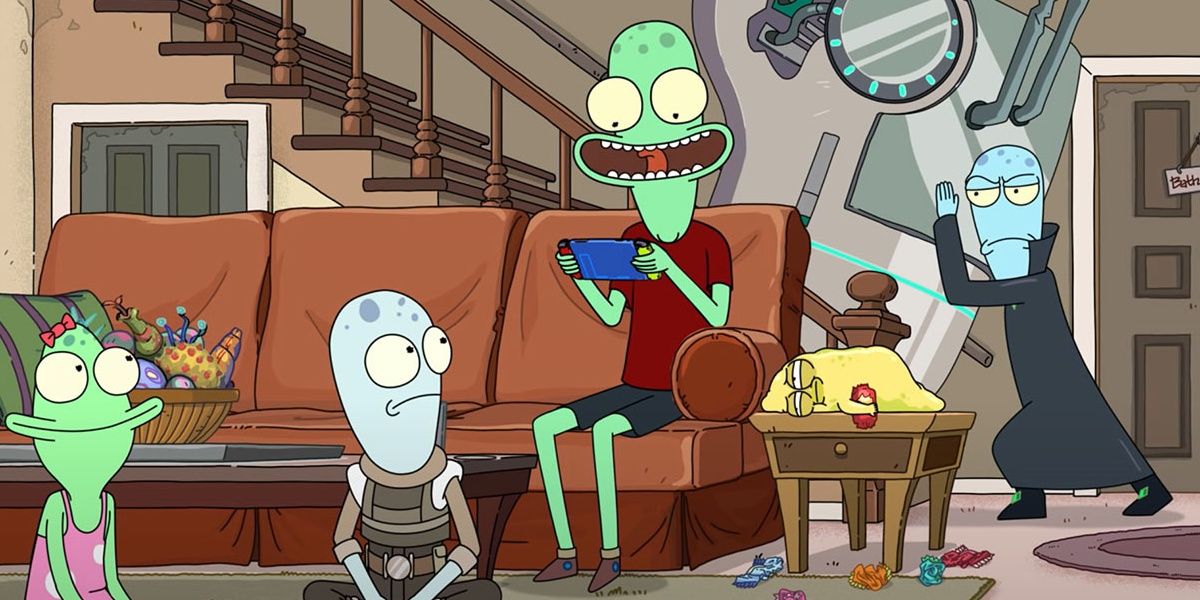
One season obviously doesn’t define a show or its characters, but after the first season of Solar Opposites, it feels like the characters need some time to really resonate with fans. Right now, all we know is that Korvo hates Earth, Terry loves Earth, and Yumyulack and Jessie are trying to fit in in high school while dealing with racism and bullying, and that’s it.
Rick And Morty had characters that were likable and memorable from the outset, a rare feat. It took fans a while to get used to their idiosyncrasies, but, by the end of the season, fans understood the character’s motivations and personalities. It’ll take Solar Oppositesat least another season before fans can start identifying with any of the characters.
Can: Well Written C-Plots
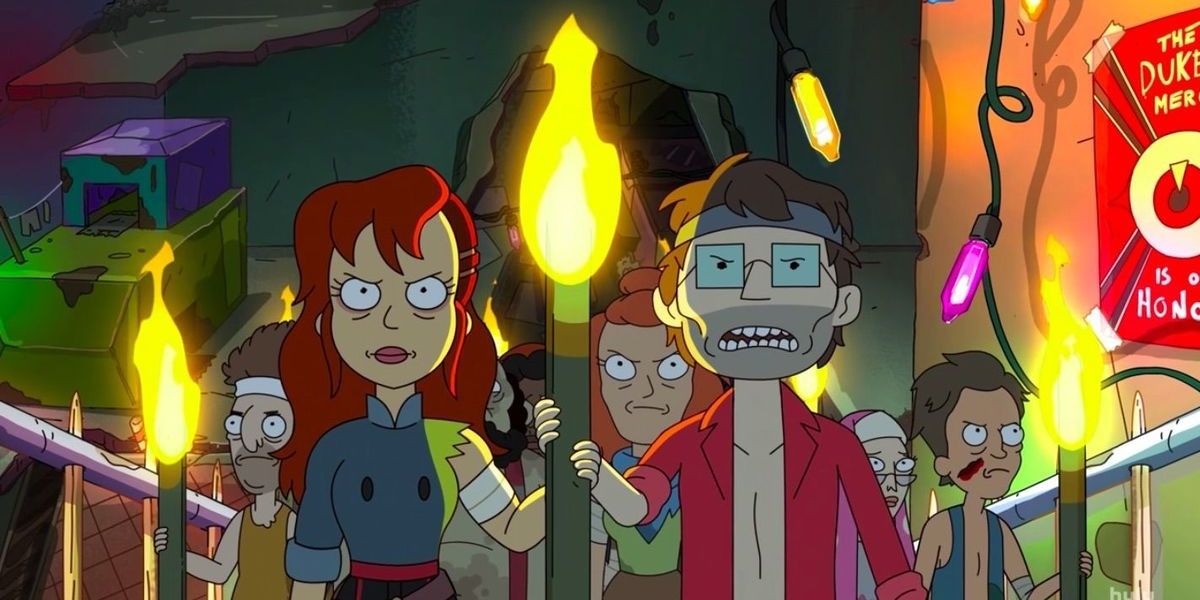
Solar Opposites has one definitive advantage over Rick and Morty, and that is that they are able to carry plots beyond the Shlorpians. The main C-plot involves the humans that Yumyulack shrunk who now reside in The Wall. For the limited amount of time that viewers learn about The Wall, or the main characters Tim and Sherry, they get a considerable amount of information and are invested in their story.
There are three additional C-plot episodes in the season, but their focus is the Pupa and what he does when not being watched by the Shlorpians. Though these are more filler than anything else, the Pupa’s adventures carry a sort of cutesy charm to them, especially considering the Pupa’s ultimate destiny of being a planet destroyer and reformer.
Can’t: The Hulu Stigma
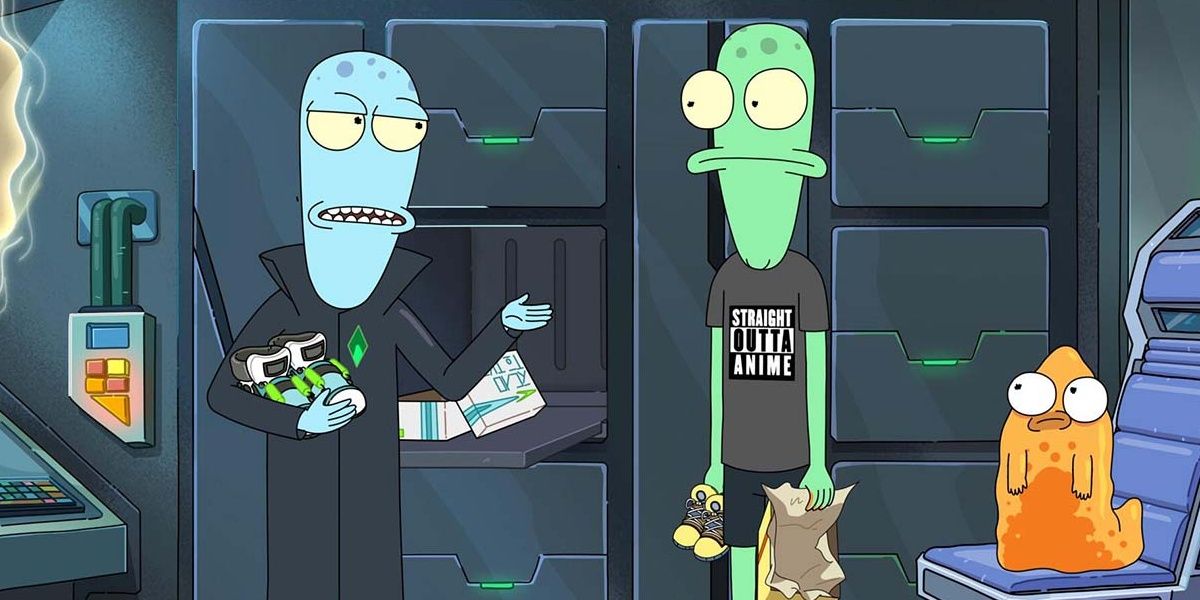
While Hulu does an admirable job with an extensive library of shows, both current and concluded, its Hulu Original library isn’t as strong as its competitors.
Before Solar Opposites received the acclaim it did, Hulu had one other great performing non-miniseries: The Handmaid’s Tale. This isn’t to say that Solar Opposites is doomed to fail; it could help Hulu develop more compelling original programming, but compared to services like Netflix, CBS All Access, and Disney+, it’s got a ways to go before it can play with the big boys.
Can: A More Optimistic Tone
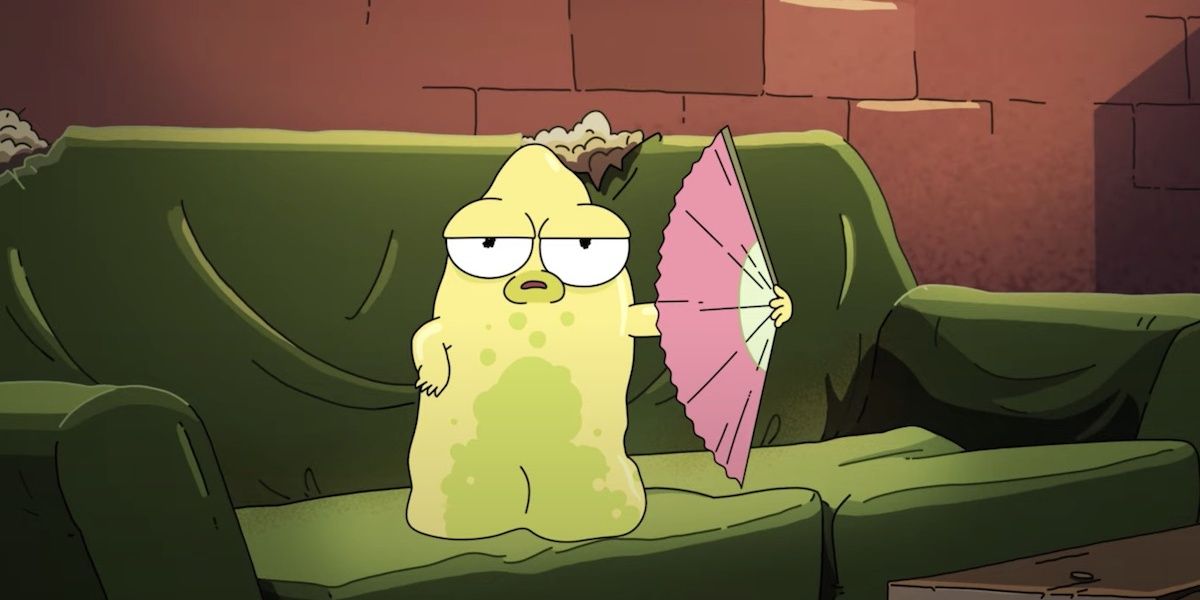
Rick and Morty may dazzle fans with a diverse set of characters and settings along with some fantastic plots, but the underlying themes of nihilism, depression, cynicism, and pessimism continue to persist in the series. Basically, Rick and Morty sometimes leads one to believe they cannot trust their own happiness.
Solar Opposites seems to be more genuine in tone. The characters and their dilemmas are taken seriously, and even though there are some cynical moments, the episodes generally boil down to “We’re in this together.”
Can’t: Little Sibling Syndrome
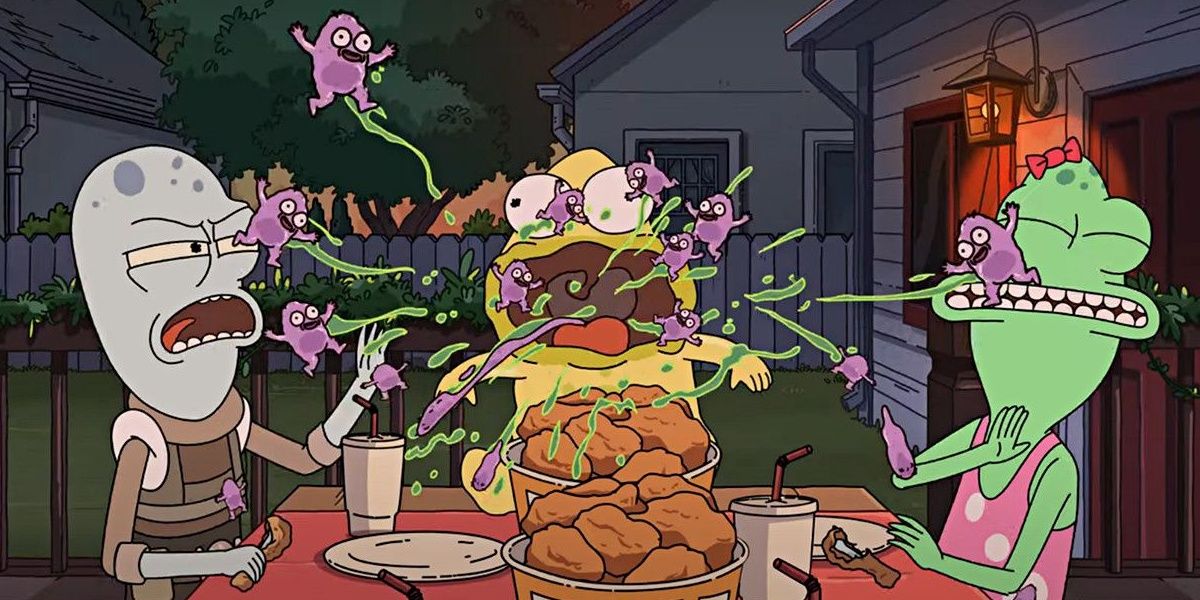
For as good as Solar Opposites can be, it will always suffer one flaw that is entirely out of its control: Little Sibling Syndrome. It will always be perceived as a pale imitation of its predecessor. Like American Dad! to Family Guy, or Tuca and Bertie to BoJack Horseman, Solar Opposites will always struggle to escape Rick and Morty‘s shadow.
Even if it does have lower expectations, it will never receive the same praise. There will always be a group of fans that believe that it’s piggybacking off of Rick and Morty‘s success, and any good it produces isn’t its own. Plus, there will inevitably be clamoring for a crossover, which while a fun idea, is completely unfair and most likely antithetical to what Solar Opposites is.




